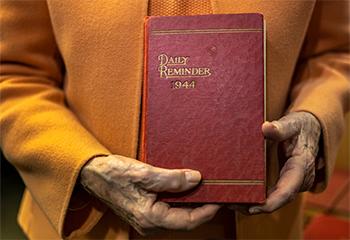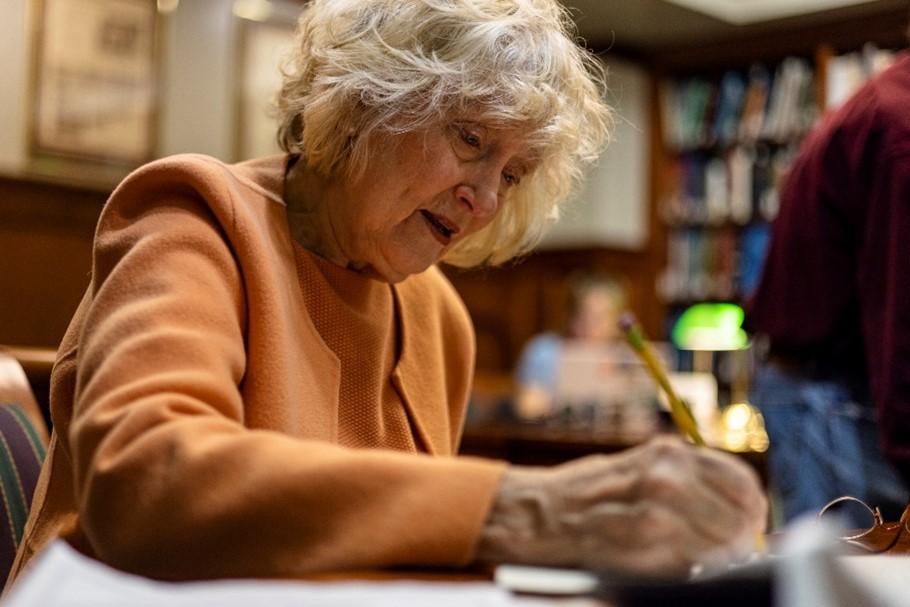
Anne Baker visits University Libraries to review the diary collection of her father, President John Calhoun Baker

In early February, Anne Baker, daughter of former Ohio University President John Calhoun Baker, was welcomed by staff in Alden Library’s Mahn Center for Archives and Special Collections (opens in a new window) during her most recent return to Athens and the University. Her drop-in visit was to review the diaries of her late father in light of University Libraries’ recent proposal to digitize content from the historic diaries. The collection spans from 1944 through 1962.
Bill Kimok (opens in a new window), university archivist and records manager, said in an email that he had been wanting to digitize the Baker diaries for over a decade and how fortunate the University is for being able to have such significant materials that give insight into various parts of such an important figure in its history.
John Calhoun Baker’s term as president is viewed as a significant one, as he was in office at the end of World War II when the University enrollment increased, and he also oversaw many expansions of OHIO such as the residence halls on East Green and the former Baker Student Center. His diary entries reflect life at OHIO and national history like the dropping of the atomic bomb and U.S. Cold War relations.
Anne Calhoun Baker, a retired professional violinist and lawyer, is the youngest daughter of John Calhoun Baker and Elizabeth Evans Baker. The Baker’s other daughters are Elizabeth (Betsy) Baker and the late Eleanor (Ellie) Baker Steindler. Anne Baker’s visit to OHIO and University Libraries was highly anticipated, as she was able to see the diaries her father donated as well as speak to the staff about the digitization efforts that will allow for many people to view former President Baker’s writings.
The 19 journals consist of daily entries from the year Baker was invited to become OHIO’s president through the 17 years he was in office. Varying in size, thickness and design, all the journals are red cloth hardcover books. Loose items such as handwritten notes, photographs and letters can also be found within his diaries.
In his entries, Baker touched on anything and everything from his relationship with faculty and students at OHIO, to incidents on campus and little stories from his friends. Baker also used his diaries to record his daily business, like notes on what meetings he had that day and student advising. When Anne Baker came to read her father’s collection, she was touched to see details about her growing up in his handwriting.
Kimok also mentioned the benefit of being able to look at the personal details of Baker’s family life like the inclusion of Anne, Betsy and Ellie, as well as the in-depth descriptions of multiple historical events over time.
“Although we have his [John Calhoun Baker’s] administrative presidential papers and a collection of President Baker’s many speeches, the diaries show us another side,” Kimok wrote. “The human perspective of being the president of a rapidly growing university during a time when obtaining higher education was becoming more relevant and important to American families … while at the same time, allowing us to see his thoughts about being a husband and father.”
With the digitization and preservation of Baker’s journal collection, not only will researchers get the chance to see a more intimate side of the former president and his unique perceptions and observations, but also understand his legacy in history.


